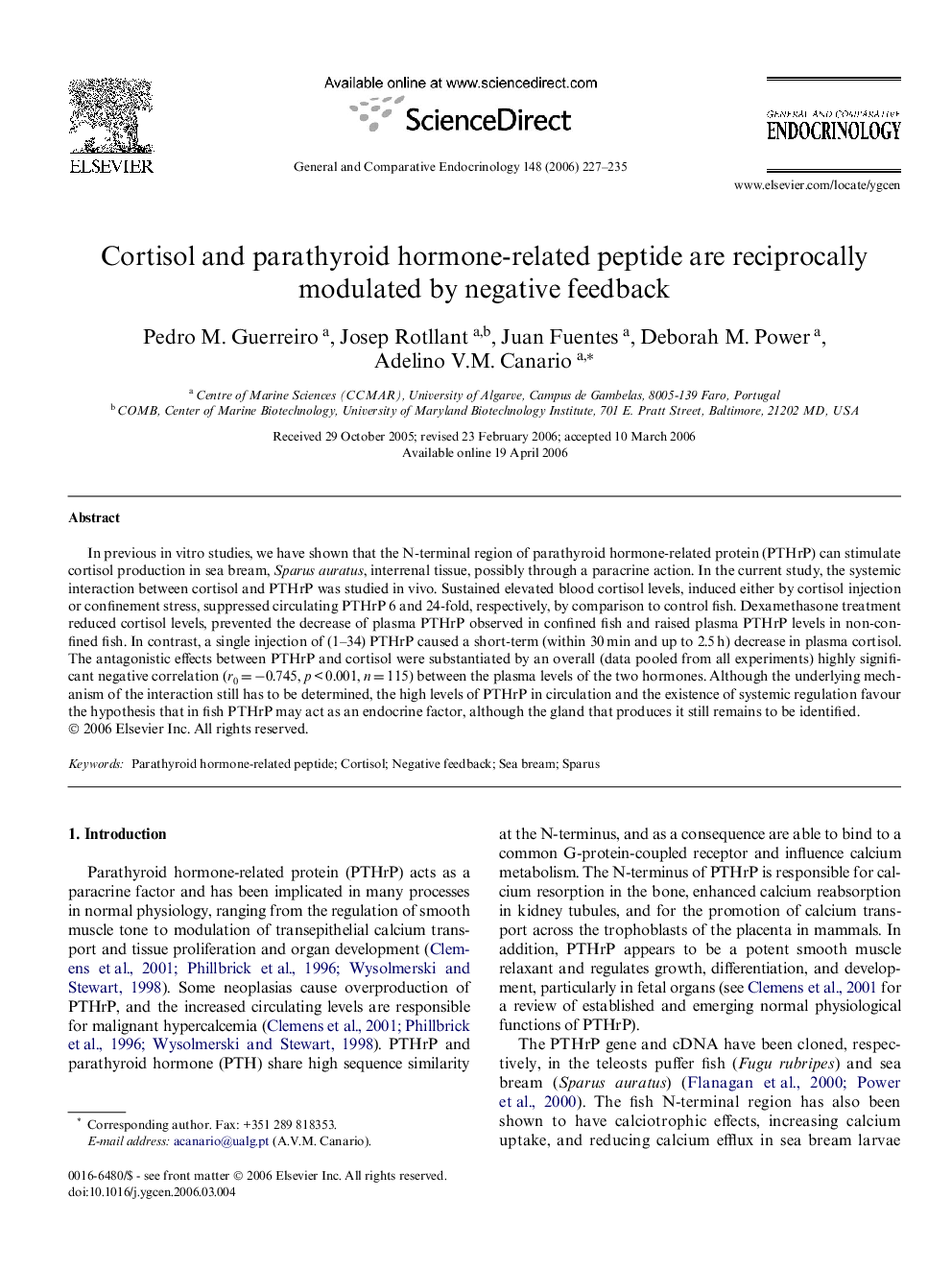| Article ID | Journal | Published Year | Pages | File Type |
|---|---|---|---|---|
| 2802412 | General and Comparative Endocrinology | 2006 | 9 Pages |
In previous in vitro studies, we have shown that the N-terminal region of parathyroid hormone-related protein (PTHrP) can stimulate cortisol production in sea bream, Sparus auratus, interrenal tissue, possibly through a paracrine action. In the current study, the systemic interaction between cortisol and PTHrP was studied in vivo. Sustained elevated blood cortisol levels, induced either by cortisol injection or confinement stress, suppressed circulating PTHrP 6 and 24-fold, respectively, by comparison to control fish. Dexamethasone treatment reduced cortisol levels, prevented the decrease of plasma PTHrP observed in confined fish and raised plasma PTHrP levels in non-confined fish. In contrast, a single injection of (1–34) PTHrP caused a short-term (within 30 min and up to 2.5 h) decrease in plasma cortisol. The antagonistic effects between PTHrP and cortisol were substantiated by an overall (data pooled from all experiments) highly significant negative correlation (r0 = −0.745, p < 0.001, n = 115) between the plasma levels of the two hormones. Although the underlying mechanism of the interaction still has to be determined, the high levels of PTHrP in circulation and the existence of systemic regulation favour the hypothesis that in fish PTHrP may act as an endocrine factor, although the gland that produces it still remains to be identified.
